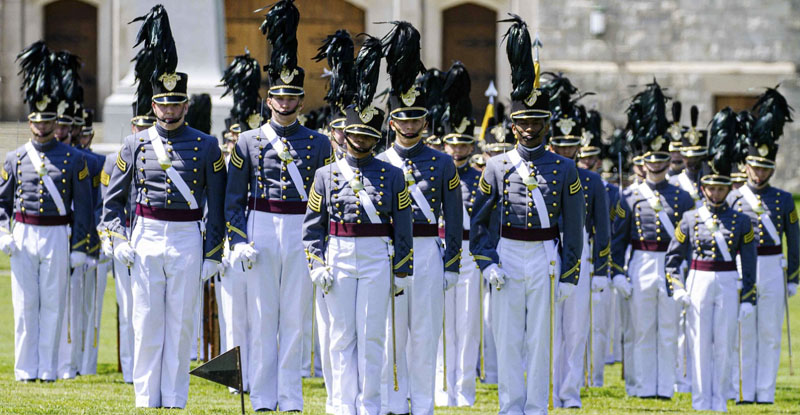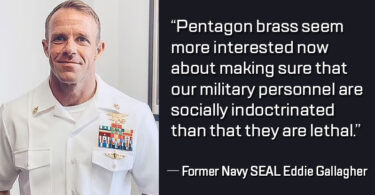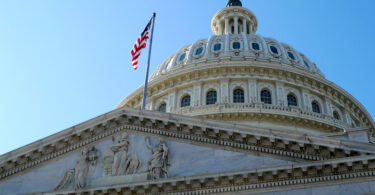By Micaela Burrow, The Daily Caller News Foundation
Military academies will likely face legal challenges for their use of affirmative action following Thursday’s landmark Supreme Court ruling that barred universities from considering an applicant’s race in admission decisions, experts told the Daily Caller News Foundation.
A 6-3 majority of Supreme Court justices in the Harvard and University of North Carolina vs. Students for Fair Admissions found that the way they prioritized applicants of certain racial categories in admissions violated the Equal Protection Clause of the 14th Amendment, overruling a prior decision that allowed universities to consider race.
Justices deferred weighing in on the ruling’s significance for military academies, opening the door for likely successful Equal Protection lawsuits against the academies as the Department of Defense (DOD) seeks to increase racial diversity among commissioning officers, legal and military experts told the DCNF.
“Any DOD spin claiming that the Court has decided not to apply the ruling to the service academies, and therefore discriminatory practices at the service academies may continue, would be disingenuous at best and without credible support,” Elaine Donnelly, founder and president of the Center for Military Readiness, told the DCNF.
But the court did not consider any cases involving the military, opting instead to leave out the question of racial preference in service academies’ admissions decisions due to the “potentially distinct interests” they might hold, according to the opinion.
“No military academy is a party to these cases, however, and none of the courts below addressed the propriety of race-based admissions systems in that context,” Chief Justice John Roberts wrote in a footnote to the majority opinion. “This opinion also does not address the issue,” he added, “in light of the potentially distinct interests that military academies may present.”
Importantly, the Supreme Court did not affirm service academies’ race-preferential admissions policies or say that the Equal Protection Clause does not apply to the military, experts told the DCNF. Rather, because the DOD was not included in the litigation, the court could not decide whether the military actually has distinct interests that meet the strict requirements for an exemption.
“The question is not whether the Equal Protection Clause applies to admissions policies at the SAs (service academies), but how do the uniquely military interests involved influence the application of the [Equal Protection] Clause in that setting?” retired law professor and Army Col. William Woodruff explained to the DCNF. “Constitutional rights apply in the military.”
Thirty-five former Pentagon officers, including four former chairmen of the Joint Chiefs of Staff, submitted a brief in support of the respondents, Harvard and UNC, anticipating the affect the case might have on military academies. They argued that taking race out of the admissions equation would “impede our military’s ability to acquire essential entry level leadership attributes and training essential to cohesion.”
Oral arguments also touched on the possibility national security interests might affect how the Equal Protection Clause should apply to service academies.
“If what you’re asking me is whether we think the military has distinctive interests in this context, I would say yes,” Solicitor General Elizabeth Prelogar told the court in October, a transcript shows. “And I think it’s critically important for the Court in its decision in these cases to make clear that those interests are, I think, truly compelling with respect to the military.”
The U.S. Military Academy at West Point explored alternatives to race-based affirmative action, such as preferencing socioeconomic status, but found that would increase the number of white men at the academy, Prelogar explained. Other race-neutral alternatives failed to improve the racial diversity rate of admitted students.
Roberts asked whether Prelogar sought to link the military academies to Harvard and UNC; “In other words, you rise and fall with their case?” he said.
Prelogar did not give a definitive answer.
Justice Roberts’ footnote, then, acknowledges the military could have distinct national security interests — but that was not a question before the court, and no body of evidence was developed in the case to prove either way the existence of unique national security interests, experts explained to the DCNF. The question will have to be answered at some other time.
“The Court did not hint, or imply, approval of DOD’s claim or of DOD’s race-based practices,” Scott McQuarrie, a West Point graduate and attorney, whose organization Veterans for Fairness and Merit wrote in support of the plaintiffs, told the DCNF.
In other words, the ruling does not, as Justice Sotomayor claims in her dissent, create a “carveout” for the service academies.
The Future Of Race-Based Admissions At Military Academies
Pentagon officials have long said they seek a total force that reflects the demographics of the American public. Efforts to increase diversity have highlighted the officer corps, where the relative proportion of racial and ethnic minorities tends to be smaller than among the enlisted ranks.
Over 75% of active duty officers are white, according to the latest DOD demographic data. “Black and African American” individuals make up 19% of the enlisted active duty force, compared with 9% of officers.
To meet those goals, the military academies have practiced affirmative action in admissions for decades, according to The New York Times.
“The U.S. Naval Academy uses race and ethnicity as one of a multitude of factors to assess applications for admission,” Cmdr. Alana Garas, a spokesperson for the academy, previously told Military Times in October. It does not assign points for race or seek to fill quotas, Garas added.
Col. Arthur W. Primas Jr., director of admissions for the U.S. Air Force Academy, told the outlet the academy also considers race in a “holistic evaluation” of candidates. “Race, along with gender and ethnicity, is not used solely as the basis for appointment consideration,” he said.
West Point’s website confirms the institution is “committed to affirmative action.”
Service academies may try to modify or reframe their existing guidance to prove their version of affirmative action is not “as bad” as the practices of Harvard and UNC, Woodruff explained to the DCNF.
“In the current political climate, my guess is the SAs will continue to march under their current policies with, perhaps, a little tweaking to better shore up their chances in resisting efforts by Congress to impose merit-based admissions policies and to prepare for the inevitable lawsuits that will come challenging the use of racial preferences in the SAs,” Woodruff told the DCNF.
DOD is “aware of the Supreme Court decision concerning affirmative action in college admissions,” a Naval Academy spokesperson told the DCNF. “We are currently assessing the decision and its potential impacts on our practices.”
The Pentagon would have to prove that to achieving greater officer diversity constitutes a national security imperative with sufficient weight to justify continued employment of race-based admissions, experts said. However, winning an exception in the court would be extremely difficult.
“Racial preferences are subject to strict scrutiny and it is very difficult to sustain racial discrimination when the policy is subjected to strict scrutiny,” Woodruff said.
“The government has dug itself into a bit of a hole,” Mike Berry, director of military affairs and senior counsel for First Liberty Institute, told the DCNF, because it often tries to achieve contradictory objectives in the name of national security.
“On the one hand, it claims that diversity is a compelling national security (governmental) interest, thus race-based admissions are necessary to maintain diversity in the military. But on the other hand, it often argues in religious liberty cases that it cannot allow individual religious expression, such as the wearing of Sikh, Jewish, or Muslim articles of faith, because uniformity in the military is a compelling national security interest,” he said.
In addition, the court applied the ruling to universities that host Reserve Officer Training Corps (ROTC) programs, which routinely commission officers into the military.
“That is an implicit rejection of DOD’s claim,” McQuarrie told the DCNF.
“The fact that [the court] did not even blink at the military justification for racial preferences in the ROTC context, which is the largest source of officers, is pretty telling that the Court will not just roll over in a future lawsuit challenging the SA racial preferences,” Woodruff said.
Instead, service academies could look for ways to hone in recruitment to target underrepresented groups, so more minorities apply to the academy, according to Military Times.
The best way to prevent service academies from discriminating on the basis of race when deciding who to admit is for Congress to step in, Donnelly told the DCNF.
“Officials will try to maintain racial preferences as usual, until Congress intervenes or an affected plaintiff with standing files suit,” she said.
“Generations of recent military experience have shown that warfighter teams have been successfully built on the selfless, colorblind culture (and mutual trust) that the Court’s decision reminds us is a national imperative. … There’s simply no excuse for compromising military leader quality, at any level, by diluting merit with identity-based preferences,” McQuarrie said.








Leave a Comment